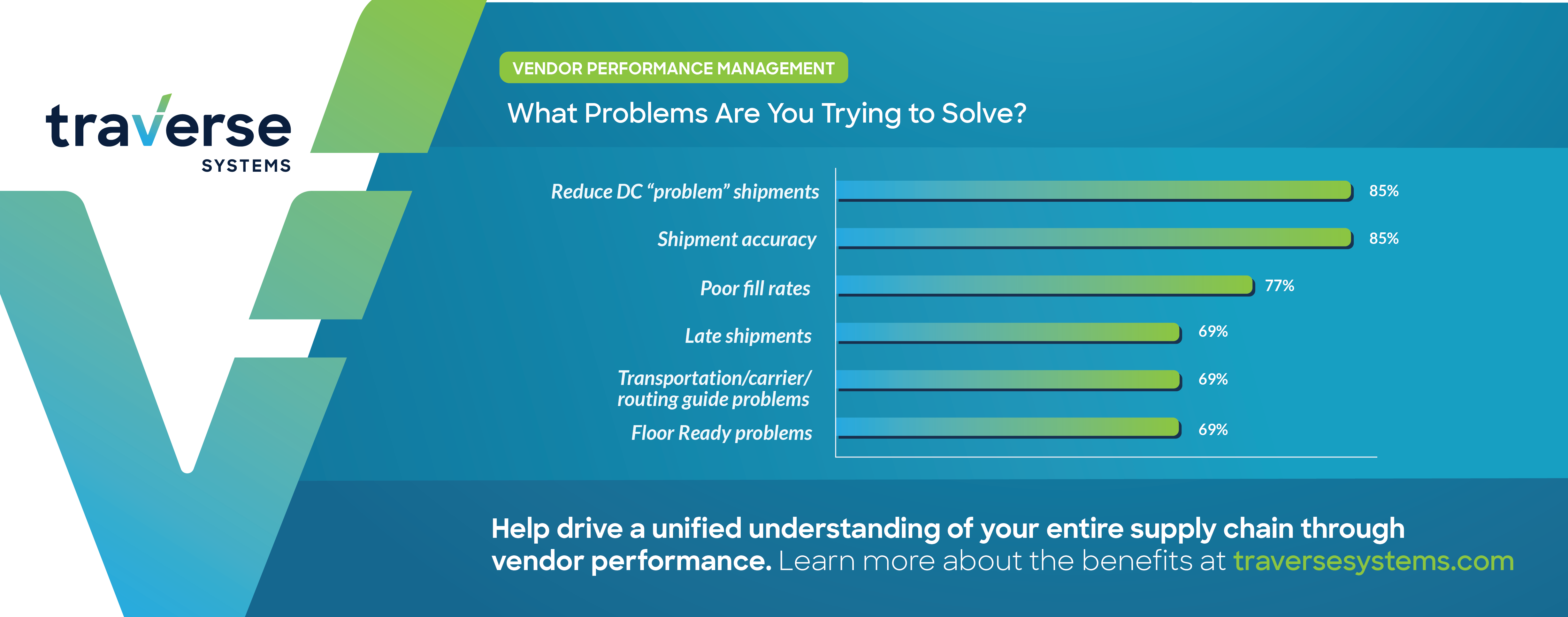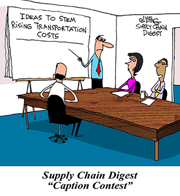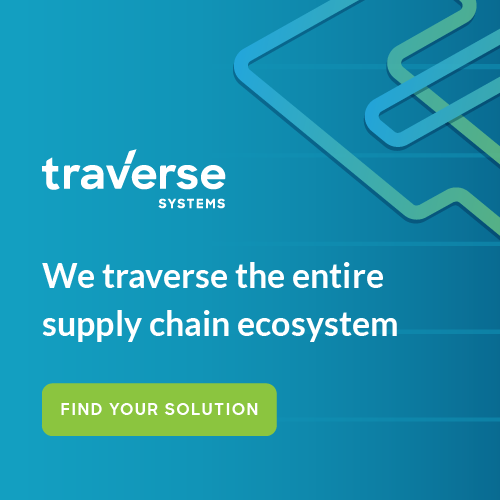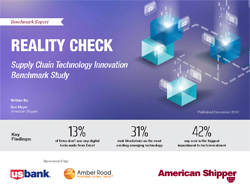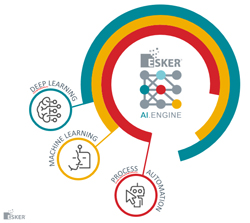Trip Report: WERC 2019
I am just back from two good days this week at the annual conference of the Warehouse Education and Research Council (WERC) at the Columbus convention center.
In fact, WERC was started 42 years or so ago by legendary warehouseman and consultant Ken Ackerman - who it was good to see there at the conference - a close colleague, some local shippers and a few academics from Ohio State University. The first conference came quickly thereafter in Columbus as well, which has been a distribution hub for a long time.
If you haven't been to one of these events, WERC's conference is of a decent size - about 600-700 attendees I would say - but it maintains a relaxed, boutique sort of feel, with many of its members very passionate about organization and its mission. It is one of my favorite events.
As the name implies, the event focuses on 4-wall distribution center matters like no other conference really does, but there are other subjects covered as well.
| GILMORE SAYS: |
In both these two more traditional 3PL contract models, lots of what Holcombe called "perverse incentives" crept into the arrangement.
WHAT DO YOU SAY?
Send us your
Feedback here
|
WERC tries to pack an awful lot into a short amount of time and given the number of attendees it attracts, with keynote presentations, an aggressive number of breakout sessions each day, broad use of discussion-focused "peer to peer" sessions on focused topics (they are hit or miss in my experience based on the skill of the moderator), and a number of opportunities as always for distribution center site visits nearby, most of which were "sold out" again this year.
If you are disappointed in a WERC conference it won't be from a lack of options.
So here are the highlights from the best of the seven breakout sessions I attended.
That started early Monday with a session on the advantage of being very generous with benefits for DC workers. It was led by Annette Danek, SVP of Fulfillment, and Robin Sutton, VP of human resources, both at book publisher Penguin Random House (PRH).
I've gotten to know Danek over the last few years, in part due to our uncanny habit of choosing the exact breakout sessions to attend at both the WERC and the CSCMP conferences. So I felt I had to attend her session this year, and I am glad I did. It was thought provoking - and maybe even a bit controversial.
The topic - a very generous approach to DC worker benefits and policies - stems from the philosophy adopted by PRH a couple of decades ago for all white and blue collar employees - the same benefits should apply to everyone.
That includes offering 4 weeks of vacation after just 2+ years of employment. This in two DCs that employ 700 and 830 DC associates, respectively.
But there is a whole lot more, with, for example, 8 hours of pay for 6 hours work on weekend shifts. PRH also uses of a web app I know a bit about called Forge that allows the company to post available shifts and then on-demand workers - all vetted and trained in advance - to grab the shifts that meet their flexible schedule.
PRH also offer more paid personal off than most companies. DC workers can have also 7 attendance "occurrences," as they say, within in a year before being disciplined.
Why those last two? The company understands workers, especially Moms with kids, simply have things happen for which they need time off.
Do some workers take advantage of these extremely generous policies? A few for sure. But the company just doesn't worry about that 10% or so, who usually don't last too long for other reasons anyways. The focus is on the 90+ percent who don't take advantage.
That worker treatment is simply core to Penguin's entire culture. Is there a cost? Yes - it needs more workers than it would with less generous policies, as just one example.
But Danek and Sutton say those costs are much smaller than the benefits received back in terms of productivity, greatly reduced turnover, higher quality and more. And when they need to ask workers to come in early, or work some unexpected overtime, most workers are happy to say Yes.
And by the way, most of the DC workers, including fork truck drivers, are women. There is a lot more to this story, in a very interesting approach to labor management.
Monday afternoon, I attended a presentation around improving shipper-3PL relationships, largely using principles articulated in a book by Kate Vitasek titled "Vested Outsourcing."
Thomas Holcombe of Sulzer Pumps calls the approach "shared pain and shared gain." The collaborative approach was finally taken as a last choice, after a cost-plus contract with 3PL , Sunland Logistics Services, represented in the session by Elijah Ray, that favored the 3PL. That was then followed by a fixed-price transactional model that sort of favored Sulzer at the price of tension and a lack of true partnership in the relationship.
In both these two more traditional contract models, lots of what Holcombe called "perverse incentives" crept into the arrangement.
In the end, they wound up with the shared model, where there was complete transparency in terms of costs and process information on both sides. From there, baselines for a combined operation are set. If actual costs come in higher, the penalty is shared 50-50 - as are the savings if cost reductions are achieved.
Just to illustrate how this can unleash innovation, when Sunland saw packaging costs were rising for Sulzer, reducing profits for the integrated operation, it identified ways that those packaging costs could be reduced even though it was not responsible for packaging supplies. But it benefitted from those ideas when the savings were achieved.
This is hardly the first tale of success with vested outsourcing. I wrote a story on Dell's success with the approach a number of years ago. But it is a good story - lines per hour are up 13%, for example. Especially interesting to me was a discussion in the QA time as to whether a shipper-3PL relationship can ever start here - or do you always need to go through a period of frustration first? I think the latter is probably correct.
Tuesday morning I went to a well-attended session on "Hierarchy of Distribution Metrics," led by Tracie Haislip, director of supply chain planning at Tractor Supply Company, and Tim Judge, CEO of consulting firm Agilistics.
I was modestly disappointed in one thing. I thought this might involve a revision specific to logistics from Gartner's overall "hierarchy of supply chain metrics," which places forecast accuracy as the top metric - a structure I have not agreed with. But that revision didn't happen, and the speakers actually showed the Gartner model a couple of times, with forecast on top, without mention.
Beyond that, there was some good material. At the end of the day, a key message to me was still here in 2019, many even large companies don't have their supply chain metrics right.
One key is building "line of sight" between corporate strategies and targets to overall supply chain and functional department metrics - ensuring they in fact connect and align.
And this goes both ways - discussed was the need to educate execs on how say case fill rates really do impact company profits and customer service.
TSC is living that: a service focused company, of its top supply chain metrics, 57% are service-oriented, 29% quality-focused, just 14% cost-focused.
There are still issues, such as buyers still measured on gross profit, without considering total landed cost or what I call total through costs, meaning all the way to self. TSC is working on it.
Later Tuesday, attended a session on logistics security threats and best practices, by Barry Bransman of Danbee Investigations.
I've seen him speak at WERC before and largely it was the same presentation, but he knows what he's talking about for sure - and the threats are very real.
In fact, some $35-40 billion in logistics related thefts occur annually in the US, most of it not publicly reported.
The Internet has made it worse. It is incredibly easy for thieves become anonymous sellers on various web sites, and leverage parcel shipping of stolen goods to almost anywhere in the world.
Law enforcement does not have the resources to chase that. Even worse, Danbee gathered solid evidence related to theft of $2 million in goods for one client, but New York City prosecutors said they'll try get to it when they can, noting no one was hurt, and it wasn't all that much money for a large corporation.
In addition to theft, the growing threat now is terrorism: materials, guns, bombs even people in containers. Acting on a tip, law enforcement officials in the US recently opened a container that left Europe, made stop in the Middle East, and arrived in the US. Inside was a terrorist with fake IDs, and a large amount of US cash. Just 3% of containers coming into the US are opened and inspected.
Organized crime now is also actively involved - Bransman actually showed a typical or chart. The reason: high reward, and low chance of being caught and prosecuted.
The main message: alarm systems, video systems, security guard arrangements and the overall security protocol more often than not very have many vulnerabilities, and/or is outdated.
I am out of room. All told, another good job by WERC CEO Mike Mikitka and team. I will be back in 2020.
Any reaction to this WERC conference summary? Were you there? What did you think? Let us know your thought at the Feedback button below. |



![]()

![]()

![]()

